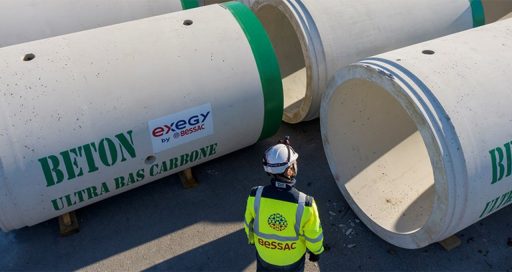There are three ways for a country to measure greenhouse gas emissions. For a business in France, Ademe’s GHG Balance is the benchmark.
![]()
In 2019, the last recorded year before Covid-19, French people had a carbon footprint of 9 tonnes of CO2 equivalent per person per year, according to the most recent data from the French authorities aggregated by the site MyCO2.fr.
Carbon footprint represents the quantity of greenhouse gases (GHG) caused by a country’s or company’s demand for goods and services, whether produced domestically or imported. It allows an assessment of the climate stress caused by internal demand, regardless of the geographical origin of the products consumed.
But how is it measured?
Three types of measurement for a country
There are three ways for a country to measure greenhouse gas emissions: the territorial footprint calculates greenhouse gas emissions within a country’s borders;(1) the consumption footprint is the result of final usage of goods and services;(2) and the extraction footprint is derived from the fossil energy extracted by a country.(3)
These three measurement types are not cumulative; they are complementary. Following this model, which is now sovereign in all academic publications on the subject, France’s territorial footprint in 2019 was 6.5 tonnes of CO2 equivalent per person, all gases included, for an extraction footprint of 0.03 tonne and a consumption footprint of 9 tonnes.
Carbon footprint represents the quantity of greenhouse gases (GHG) caused by a country’s or company’s demand.
In terms of guiding climate policy, national inventories reporting all territorial emissions remain the key tool. But the national inventory does not account for all the country’s emissions. It needs to be considered in conjunction with two other measurement tools: the consumption footprint and the extraction footprint.
In European Union countries, the consumption footprint allows monitoring of the “carbon leakage” that could result from accelerating actions to reduce territorial emissions.
To avoid this type of bias, the European Commission is working on two important instruments: a border procedure placing European producers that pay CO2 quotas on an equal footing with importers that are exempt, and stronger regulation of imported deforestation.
GHG Balance: the benchmark for companies
For companies in France, the benchmark is the Ademe GHG Balance. Ademe is the environmental transition agency. It assesses the quantity of greenhouse gases released into the atmosphere (or captured) over one year by the activities of a given organisation.
The ENE Law of 2010 makes it mandatory for companies with over 500 employees (such as the VINCI Group, local authorities with more than 50,000 residents and public institutions with more than 250 officers.
But even for those not concerned with regulations, whatever their business sector, creation of a GHG balance is recommended as the first stage in developing a low-carbon strategy. For example, in the construction sector, which is one of the biggest emitters of CO2.
To calculate this GHG balance, the initial parameters must be defined. This begins with the perimeter to be taken into account: organisational perimeter (defining the sites, facilities and capabilities to be included in the balance); operational perimeter (defining the sources of Scope 1, 2 and 3 emissions); sources of emissions according to each Scope 1, 2 and 3 category; and the internal and external data to be used.
Once this preparatory work is complete, the company can calculate its GHG balance. This highly technical stage can be carried out internally or with help from an external provider. When the balance has been calculated, it must absolutely be made available to decision-makers so they can appreciate the scale of their organisation’s environmental and energy issues.
It is then possible to move on to the next stage: creating an action plan to reduce emissions together with the company’s employees and stakeholders. The final phase involves publishing the balance, as a means of promoting the company’s approach and contribution to the fight against climate change, and setting out its environmental policy.
1) A country’s territorial footprint is established based on a national inventory of greenhouse gas emissions. Each country provides the secretariat of the United Nations Framework Convention on Climate Change (UNFCCC) with an inventory drawn up according to guidelines defined by the Intergovernmental Panel on Climate Change (IPCC). In France, the national inventory is compiled by the interprofessional technical centre for air pollution studies (CITEPA).
2) The consumption footprint is calculated from databases such as the one maintained by Ademe in France.
3) The extraction footprint was calculated in the 2019 “Production Gap” report by the UN Environment Program (UNEP).
12/05/2022





